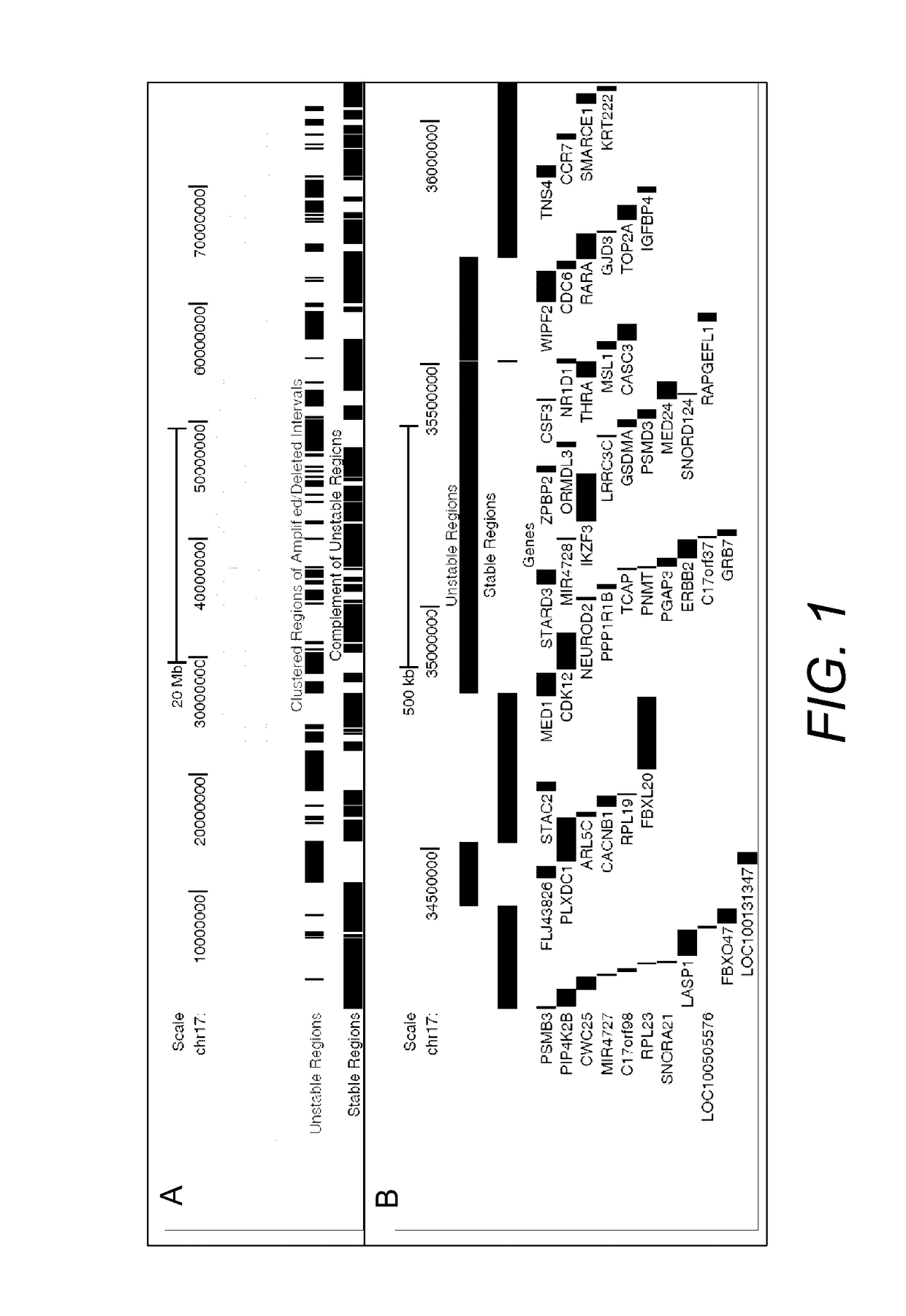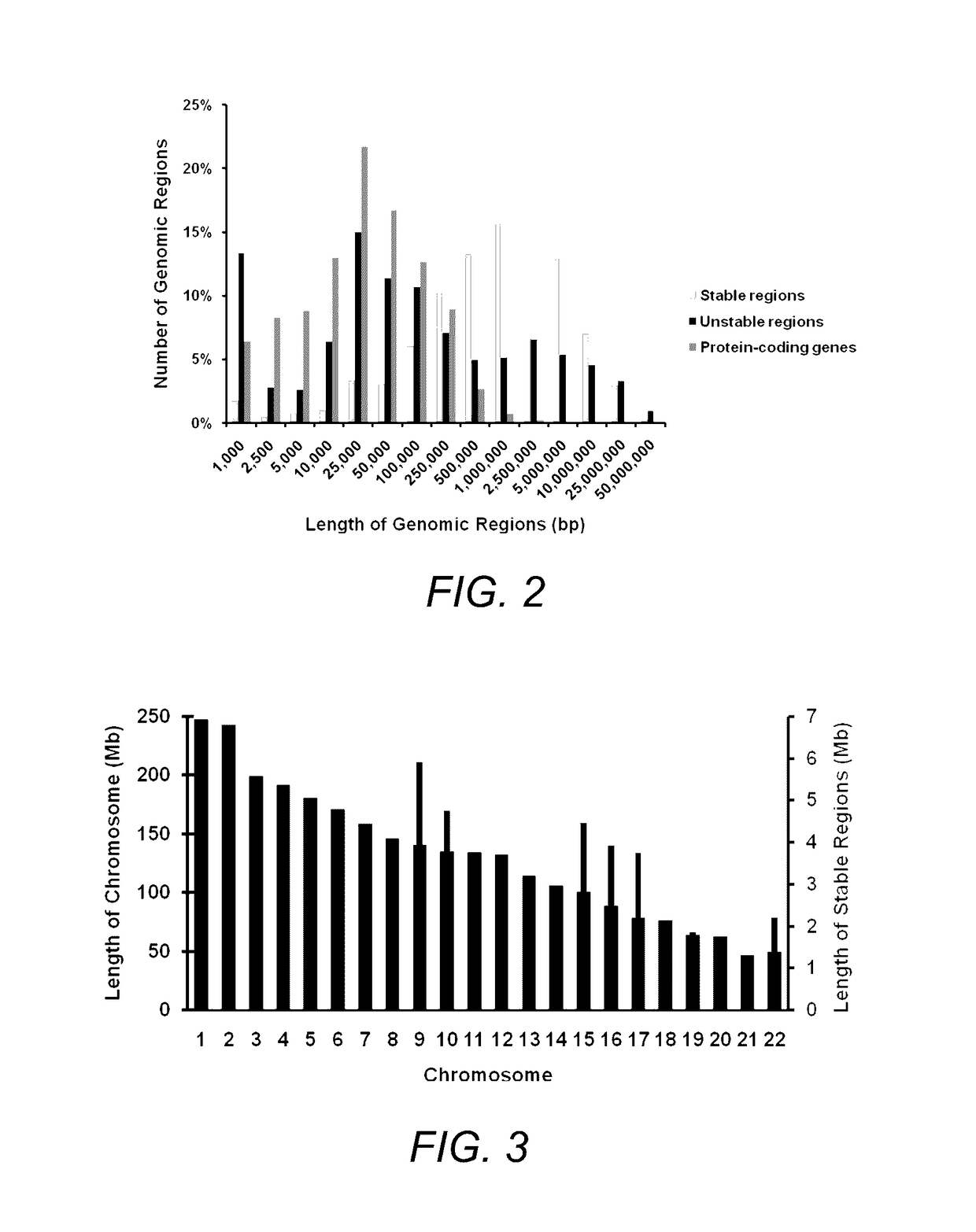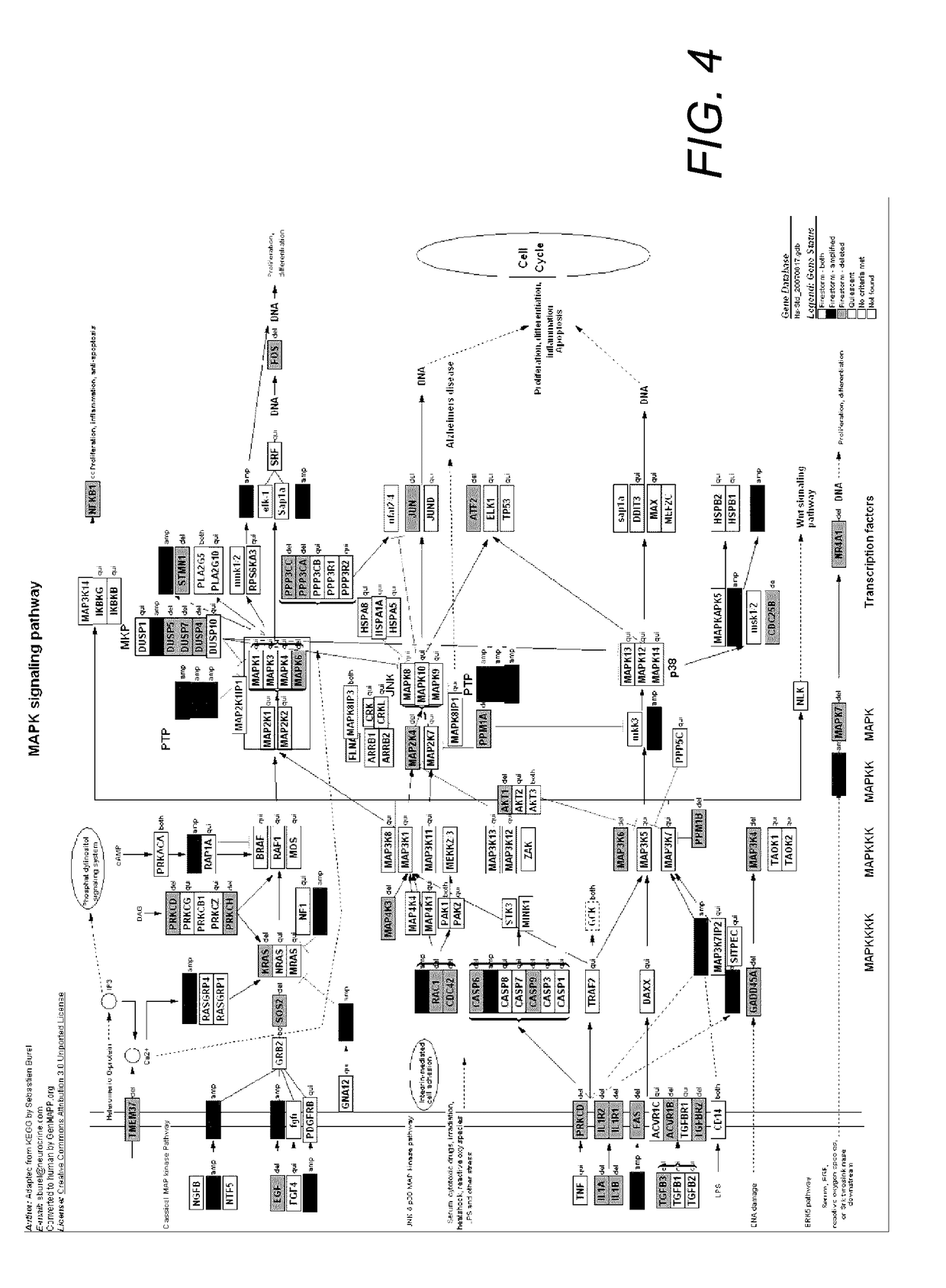Stable gene targets in breast cancer and use thereof for optimizing therapy
a breast cancer and gene target technology, applied in the field of breast cancer gene target and optimized therapy, can solve the problems of the focus of genes with little or no variation in copy number or expression has not been a focus, and achieve the effects of stable copy number, reduced copy number, and stable copy number
- Summary
- Abstract
- Description
- Claims
- Application Information
AI Technical Summary
Benefits of technology
Problems solved by technology
Method used
Image
Examples
example 1
Stable Regions in Genomes of Breast Cancer Patients
[0069]We report stable regions in the breast cancer genome based on analysis of two independent datasets which mapped copy number alterations (Chin, et al., 2007; Hicks, et al., 2006), and filter the content of these regions for genes with nominal expression levels (see Section 3.1.2). From 2,847 ‘representative or core’ oligonucleotide probes that detected frequent deletions and amplifications in 243 primary breast carcinoma tissues, 766 contiguous genomic regions were derived and classified as unstable and 812 adjacent genomic intervals as stable (FIG. 1 and Table 1).
[0070]
TABLE 1Summary of aCGH Datasets Used toDerive Stable Copy Number RegionsDataset 1Dataset 2(Hicks et al. 2006)(Chin et al. 2007)aCGH PlatformROMACustom array(GEO: GPL7313)(GEO: GPL5737)Total Probe No.85,000 (50-mer)30,000 (60-mer)No. of ProbesNo. of RegionsCopy Number1,7721,8647821,9111,255Abnormalities(amp)(del)(both)(gain)(loss)Unstable Regions1766828Stable Reg...
example 2
[0076]Stably expressed genes in stable copy number regions: major pathways and functions involved in tumor maintenance.
[0077]Within stable regions, there were 9,463 complete CCDS genes (8,083 with Entrez Gene IDs) and 7,403 genes within unstable regions. Expression analysis of paired breast tumors and normal controls (Turashvili, et al., 2007) demonstrated 5,804 genes to be stable at both genomic and transcript levels. These dually stable genes were analyzed in established cellular pathways and gene ontologies, which suggested functions that are maintained in the majority of breast tumors. Interestingly, many of the same pathways containing stable genes are also disrupted by abnormalities in unstable or mutated genes. We suggest that this overlap may be relevant to tumor initiation and / or maintenance. The dually stable gene set was enriched for KEGG pathway hsa05200, which includes neuroactive ligand-receptor interaction (p=7.32e−14), cytokine-cytokine receptor interaction (p=2.54e−...
example 3
Stable Gene Products as Targets for Breast Cancer Therapy
[0082]A common set of dually stable genes is more likely to be functional in a plurality of tumors. Their products may represent potential therapeutic targets, since drugs acting upon them would be effective in a preponderance of tumors. These gene products are thus plausible targets for systemic breast tumor chemotherapies that are approved because of their efficacy in ablating tumors in the maximum number of patients. Genes encoding these targets would thus be maintained as an ensemble in the breast tumor genomes, since drugs would be expected to disrupt multiple functions or pathways containing them.
[0083]Of the 68 agents commonly used in breast cancer treatment, 24 of them target proteins encoded by dually stable genes (Table 3). Genomic stability of the 3 genes tested (CSF1R, FLT4, and GMPR2) was confirmed by metaphase FISH (Supporting information Table S5). Pathways containing each of these gene products included metabol...
PUM
| Property | Measurement | Unit |
|---|---|---|
| nucleic acid sequence analysis | aaaaa | aaaaa |
| nucleic acid sequence | aaaaa | aaaaa |
| nucleic acid | aaaaa | aaaaa |
Abstract
Description
Claims
Application Information
 Login to View More
Login to View More - R&D
- Intellectual Property
- Life Sciences
- Materials
- Tech Scout
- Unparalleled Data Quality
- Higher Quality Content
- 60% Fewer Hallucinations
Browse by: Latest US Patents, China's latest patents, Technical Efficacy Thesaurus, Application Domain, Technology Topic, Popular Technical Reports.
© 2025 PatSnap. All rights reserved.Legal|Privacy policy|Modern Slavery Act Transparency Statement|Sitemap|About US| Contact US: help@patsnap.com



